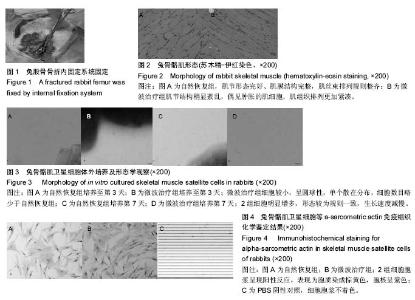| [1] Einhorn TA.Enhancement of fracture-healing.J Bone Joint Surg.1995;77(6):940-956.
[2] Wyper DJ, McNiven DR.The effect of microwave therapy upon muscle blood flow in man. Br J Sports Med.1976;10(1):19-21.
[3] Sekins KM, Lehmann JF, Esselman P et al. Local muscle blood flow and temperature responses to 915 MHz diathermy as simultaneously measured and numerically predicted. Arch Phys Med Rehabil.1984;65(1), 1-7.
[4] Cavaliere R, Ciocatto EC, Giovannella BC, et al. Selective heat sensitivity of cancer cells. Biochemical and clinical studies. Cancer.1967;20(9), 1351-1381.
[5] Song CW. Effect of local hyperthermia on blood flow and microenvironment: a review. Cancer Res.1984; 44(10 Suppl):4721s-4730s.
[6] Leon SA,Asbell SO, Edelstein G, et al. Effects of hyperthermia on bone. I. Heating rate patterns induced by microwave irradiation in bone and muscle phantoms.Int J Hyperthermia.1993a; 9(1):69-75.
[7] Leon SA, Asbell SO, Arastu HH, et al. Effects of hyperthermia on bone. II. Heating of bone in vivo and stimulation of bone growth. Int J Hyperthermia. 1993b; 9(1):77-87.
[8] Chang WH,Sun JS,Chang SP,et al. Study of thermal effects of ultrasound stimulation on fracture healing. Bioelectromagnetics.2002; 23(4):256-263.
[9] Ruggera PS, Witters DM, von Maltzahn G, et al. In vitro assessment of tissue heating near metallic medical implants by exposure to pulsed radio frequency diathermy. Phys Med Biol.2003;48(17):2919-2928.
[10] Martin CJ, McCallum HM, Heaton B. An evaluation of radiofrequency exposure from therapeutic diathermy equipment in the light of current recommendations.Clin Phys Physiol Meas.1990;11(1):53-63.
[11] Virtanen H, Keshvari J, Lappalainen R. The effect of authentic metallic implants on the SAR distribution of the head exposed to 900, 1800 and 2450 MHz dipole near field. Phys Med Biol.2007; 52(5):1221-1236.
[12] Ye D, Xu Y, Fu T,et al. Low dose of continuous-wave microwave irradiation did not cause temperature increase in muscles tissue adjacent to titanium alloy implants--an animal study. BMC Musculoskelet Disord. 2013;14:364.
[13] Ye D, Xu Y, Zhang H, et al. Effects of low-dose microwave on healing of fractures with titanium alloy internal fixation: an experimental study in a rabbit model. PLOS One.2013;8(9):e75756.
[14] 张晗,徐义明,万大千,等.金属植入物内固定骨折区域的物理治疗[J].中国组织工程研究,2012,16(48):8983-8987.
[15] Seiger C, Draper DO .Use of pulsed shortwave diathermy and joint mobilization to increase ankle range of motion in the presence of surgical implanted metal: A case series. J Orthop Sports Phys Ther.2006; 36(9): 669-677.
[16] Draper DO,Castel JC,Castel D.Low-Watt Pulsed Shortwave Diathermy and Metal-Plate Fixation of the Elbow. Athl Ther Today.2004;9: 28-32.
[17] 巴方,于敏,张志强.高频电场中金属植入物对周围组织影响的实验研究[J].中国医科大学学报,2008,37(3):349-351.
[18] Thomas A. Rando, Helen M. Blau. Primary Mouse Myoblast Purification, Characterization, and Transplantation for Cell-mediated Gene Therapy. The J Cell Biology.1994;125:1276-1287.
[19] Qu Z, Balkir L, van Deutekom J C,et al. Development of approaches to improve cell survival in myoblast transfer therapy.J Cell Biol. 1998;142(5):1257-1267.
[20] 纯化,黄桂林,李龙江,温玉明,等.新生SD大鼠成肌细胞体外培养的实验研究[J].实用口腔医学杂志, 2003,19(1):14-16.
[21] 杜杰,柳薇,梁闽南,等.微波电场中金属物对体表组织的影响[J].中华理疗杂志,1997,20(2):109-110.
[22] McIntosh RL, Anderson V, McKenzie RJ. A numerical evaluation of SAR distribution and temperature changes around a metallic plate in the head of a RF exposed worker.Bioelectromagnetics.2005;26(5):377-388.
[23] Baroffio A,Bochaton-Piallat ML,Gabbiani G,et al.Heterogenecity in the progeny of single human muscle satellite cells. Differentiation.1995;59(4):259-268.
[24] Sejersen T, Lendahl U. Transient expression of the intermediate filament nestin during skeletal muscle development.J Cell Sci.1993; 106: 1291-1300.
[25] Burton N,Vierck MJ, Krabbenhoft L, et al. Methods for animal satellite cell culture under a variety of conditions.Methods Cell Sci.2000; 22: 51-61.
[26] Zammit PS, Golding JP, Nagata Y, et al. Muscle satellite cells adopt divergent fates : a mechanism for self-renewal.J Cell Biol.2004;166:347-357.
[27] Gros J, Manceau M,Thome V,etc. A common somitic origin for embryonic muscle progenitors and satellite cells. Nature.2005; 435: 954-958.
[28] Sabourin LA,Rudnicki MA.The molecular regulation of myogenesis.Clin Genet.2000;57(1):16-25. |

